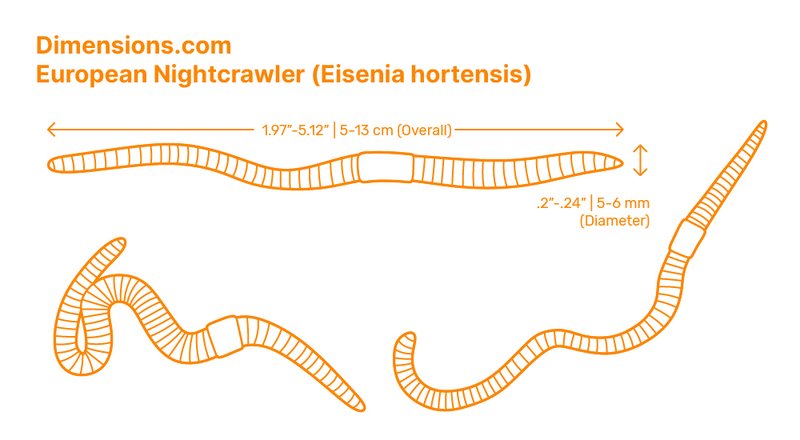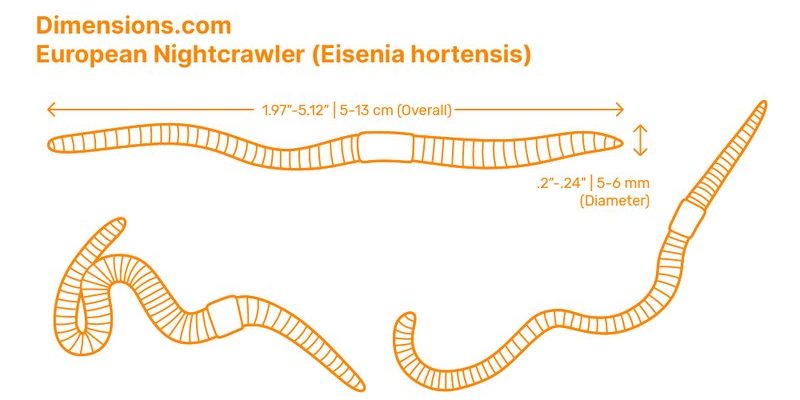
The Bobbit worm, known scientifically as *Eunice aphroditois*, is not just a garden-variety worm you’d find in your backyard. It’s a marine worm that can grow to impressive lengths and display some astonishing behavior. Their ability to extend out from their burrows to capture prey makes them one of the ocean’s skilled ambush predators. So, let’s explore how far they can stretch and why it matters in the big picture of marine life.
The Anatomy of a Bobbit Worm
To understand how far Bobbit worms can reach, we first need to take a closer look at their anatomy. These worms can grow up to 10 feet long, but their size isn’t the only thing that sets them apart. Their body is segmented and equipped with bristle-like structures called **chaetae**, which help them anchor themselves as they stretch out.
Bobbit worms have a surprisingly robust head featuring sharp jaws. They use these jaws to swiftly capture unsuspecting prey, like fish and crustaceans. The combination of their length and predatory skills makes them unique among other sea creatures.
You might be thinking about how they manage their burrows. Bobbit worms live in U-shaped tunnels buried in the ocean floor. When they’re inside their burrow, they blend in seamlessly with the surroundings, making it almost impossible for prey to detect them.
How Bobbit Worms Capture Prey
Now that we’ve covered a bit about their anatomy, let’s dive into how these worms do what they do best: hunting. When a Bobbit worm senses movement nearby, it can extend its body out of its burrow to grab its prey quickly. Depending on the situation, they can stretch about **three to four times their body length**. That’s about 30 feet if we consider a long Bobbit worm!
This dramatic extension is mostly about speed and surprise. Picture a spring coiling and then releasing its energy—Bobbit worms essentially do that. They rely on stealth and rapid movement to snatch food before the prey knows what’s happening!
The hunting strategy of Bobbit worms is fascinating. Instead of actively swimming around to find food, they stay hidden and wait. This ambush method is effective because many creatures don’t expect an attack from below.
The Range of Extension: Just How Far?
So, how far can Bobbit worms extend from their burrows? The answer varies but generally peaks around **three to four feet**. In some cases, reports suggest they can stretch even further.
Imagine being in a café and having your friend’s arm stretch out to grab a donut from the counter without them moving from their chair—that’s kind of how Bobbit worms operate! They can reach out to snatch prey while remaining anchored in their tunnel, making them very efficient predators.
While they mostly remain close to their burrows, if food is scarce, they might venture out further. However, this is a risky move. The deeper they extend, the more vulnerable they become to larger predators, like fish or even bigger sea creatures.
Habitat and Distribution
Bobbit worms are primarily found in tropical and subtropical waters. They thrive in sandy or muddy substrates, which provide the perfect camouflage for their tunnels. These creatures are often spotted around coral reefs, mangroves, and even deeper ocean floors.
What’s interesting is how their habitat influences how far they can stretch. In areas where the ocean floor is rich in life, they may not need to stretch as far because food is readily available nearby. However, in less populated regions, they may need to reach farther out to find a snack.
The depth at which they live also affects their activity. Bobbit worms that reside in deeper waters might stretch less simply because the pressure and conditions change. Here’s a fun fact: the deeper the water, the more significant the adaptations in creatures like the Bobbit worm.
Behavioral Adaptations
Another aspect to consider is their behavioral adaptations. Bobbit worms are primarily nocturnal, meaning they’re more active during the night. This is strategic because it allows them to evade predators and catch prey that may be more active at night.
Additionally, their ability to blend into the ocean floor is crucial. They can extend their bodies without exposing themselves too much, which is a significant survival tactic. If you think about it, it’s like trying to snag a cookie from a jar without letting anyone see you—discretion is everything!
Why Understanding Bobbit Worms Matters
You might wonder why it’s essential to learn about how far Bobbit worms can extend from their burrows. Understanding their behavior and physical capabilities contributes to our overall knowledge of marine ecosystems. Bobbit worms are part of the food web; they serve as both predators and prey for other marine species.
By studying them, researchers can better understand the health of marine environments. For instance, if Bobbit worms thrive, it often indicates a balanced ecosystem since they play a role in controlling the population of other small sea creatures.
Plus, these fascinating worms can teach us more about evolution and adaptation. They’ve been around for millions of years, which says a lot about their resilience!
In summary, Bobbit worms are more than just fascinating underwater creatures—they’re a prime example of nature’s ingenuity. They can extend **three to four feet** from their burrows to capture prey, depending on the situation, making them effective ambush predators. Their unique behaviors, like stealth and strategic hunting at night, showcase how they’ve adapted to their environment.
So, the next time you’re exploring the ocean—or even a local aquarium—remember the Bobbit worm. They might be hidden away in their burrows, but they’re out there, playing a crucial role in the marine ecosystem and reminding us of the wonders beneath the waves!

